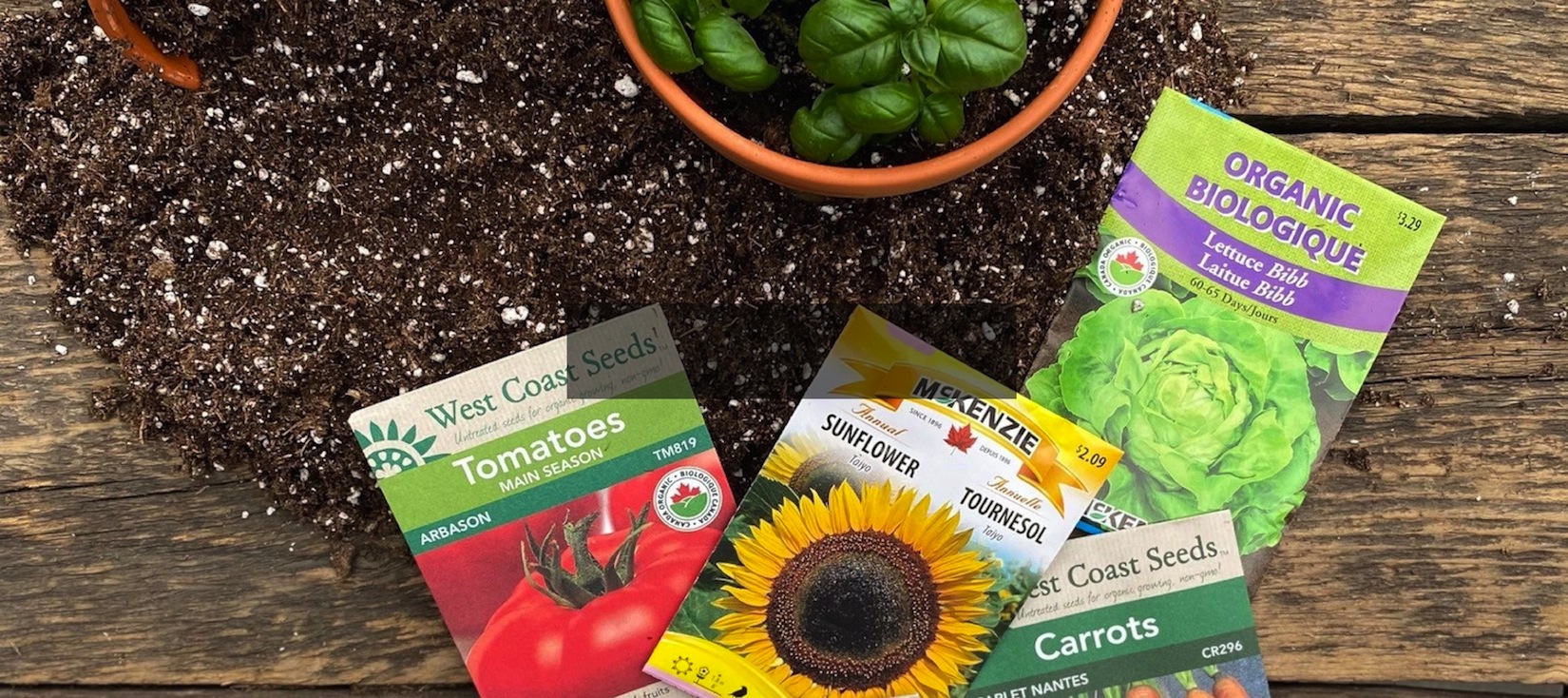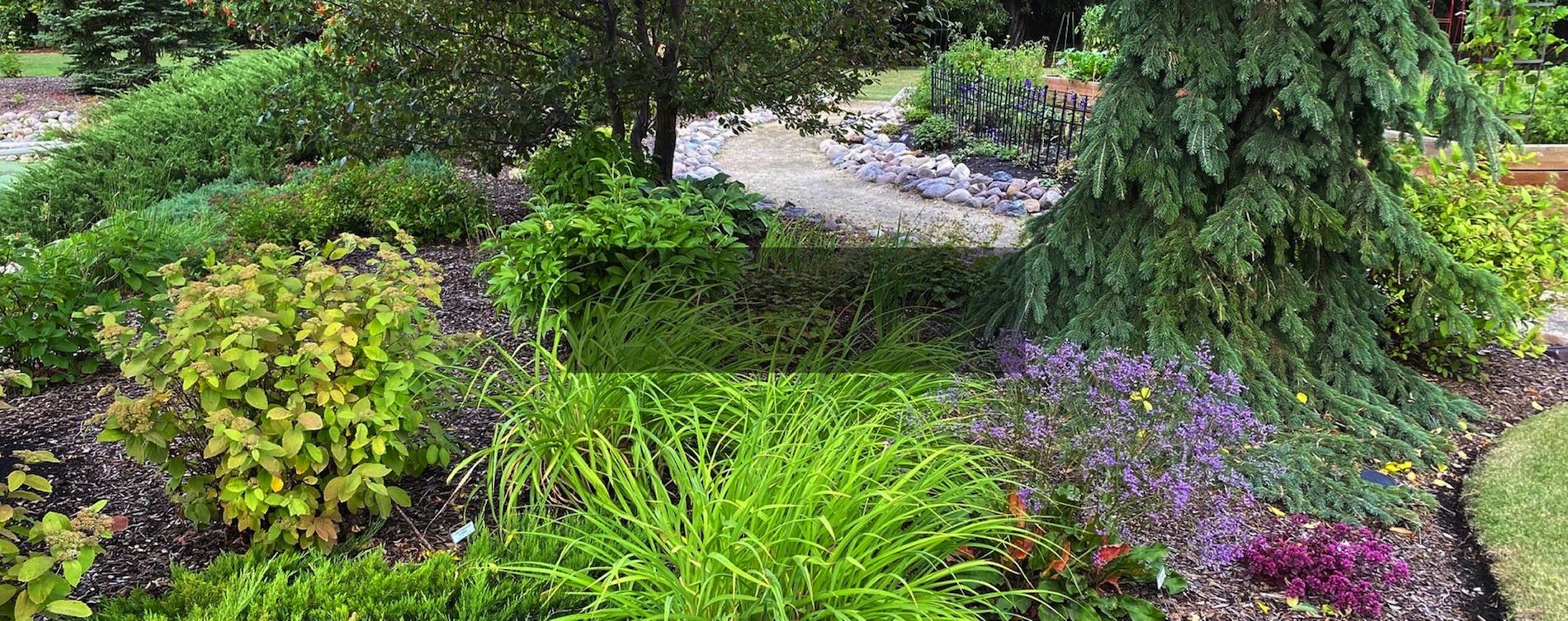What's Bugging Your Vegetables
Insect Pests

Aphids
Plants affected: Numerous vegetables
Symptoms: Severe infestations will cause curling/twisting of foliage, flowers to wilt and drop
Life Cycle: Eggs hatch on host plants in spring, these nymphs give birth to ‘daughters’, within days the daughters give birth – up to 30 generations per summer
Cultural Control:
• Ladybird beetles/larvae, lacewings are natural predators
• Strong jet of water to knock aphids off plants
Chemical Control: Doktor Doom House and Garden, End All

Potato Beetle
Plants affected: Potato
Life Cycle:
• Overwinter in soil as adults
• Adults lay eggs in spring on underside of leaves
• Eggs hatch, larvae feed on plants
Cultural Control: Handpick beetles/eggs
Chemical Control: Doktor Doom Botanics, Ambush, End All

Cabbage Worms
Plants affected: Cabbage, broccoli, cauliflower, kohlrabi, kale, cole crops
Symptoms: White moths in spring, green larvae chewing holes in leaves
Life Cycle:
• In spring moths lay eggs on undersides of leaves.
• Eggs hatch and larvae feed on foliage, and will bore into heads of plants at base
Cultural Control:
• Handpick worms
• Cover new transplants with remay cloth to prevent moths from laying eggs on plants
Biological Control: BTK

Cucumber Beetles
Plants affected: Squash, melon, cucumbers
Life Cycle:
• Adults overwinter in soil, emerge in spring and lay eggs in soil beneath plants
• Eggs hatch and larvae feed on flowers, foliage and even possibly fruit
Cultural Control:
• Handpick beetles
• Dust plants with diatomaceous earth
Chemical Control: Ambush, Doktor Doom Botanics

Cutworms
Plants affected: Lawns, vegetable crops, perennials
Symptoms: Freshly cut crops/plants—cut off right at base of plant. Worms curl up when disturbed
Life Cycle:
• Eggs overwinter on top of soil
• Larvae emerge from eggs in spring, pupate in early June. Brown moth (adult) emerges, and lays eggs which will overwinter
Cultural Control:
• Handpick worms—cutworms are active at night
• Lay diatomaceous earth around base of plant to cut worms or in rows when planting
• Place collars around plants when planting—push collar into soil
Organic/Biological Control:
• Water vegetable transplants in with nematodes
• BTK – spray base of stems thoroughly and often, will not control cutworms underground
Chemical Control: None

Flea Beetle on Potato
Plants affected: Can be found on many plants, can be quite damaging to potato
Symptoms:
• Numerous holes in foliage; similar to shot hole fungus but irregular chewed holes
• Potato; pinholes on outside flesh, spots on inside. Potato can still be eaten, need to peel away spots
Life Cycle: Overwinter in soil beneath leaf debris, emerge in spring. Adults feed on foliage, mate and lay eggs. Eggs hatch, larvae tunnel into soil, feed on tubers
Cultural Control:
•Clean up leaf debris in autumn
• Lay remay cloth over potato hills before foliage emerges. Adults cannot land on foliage
Chemical Control: Spray adult beetles in spring before they lay eggs; Ambush, Dr. Doom House and Garden

Leafminers
Plants affected: Swiss chard, spinach, beet
Symptoms: Early damage is a slender, winding tunnel, which expand and become blotches on the leaves
Life Cycle:
• Overwinters as pupae in soil, hatches late April. Adult lays eggs in tidy rows
• Eggs hatch, feeding begins. They are fully grown in a few weeks then drop into soil to pupate
• Life cycle is 30-40 days. There are three to four generations per season, mid-late May, late June and mid-August are peak activity periods
Cultural Control:
• Dust plants with diatomaceous earth
• Crush eggs early in season• Cover new plantings/seedlings with row covers so adults cannot lay eggs
• Remove all affected leaves immediately, and ensure thorough garden clean up in fall
Biological Control: Water beneficial nematodes into soil when planting

Onion Maggots
Plants Affected: Onions
Symptoms:
• First generation damage first seen in mid-late June as plants wilt/collapse
• Second generation damage is in July; plants won’t appear as dying, as maggots are in onion—need to pull onion to observe damage
Life Cycle:
• Overwinter in soil as pupa. In mid-late May, develop into adults. Adult looks like common housefly, with longer legs, narrower abdomen
• Adults will be seen flying around late May, early June, will then lay eggs at the base of young onion seedlings
• Eggs hatch, larvae bore directly into onion. Will feed for 2-3 weeks, then exit the onion and pupate in the soil
Cultural Control:
• Thorough cleanup of all onion debris in autumn
• Cover newly planted onions with Remay cloth to prevent adults from laying eggs at base of plants
• Do not plant onions in rows, mix throughout garden
Organic/Biological Control:
• Diatomaceous earth in furrows when planting, at base of plants
• Water transplants in with nematodes when planting

Radish Maggots
Plants affected: Turnip, radish
Symptoms:
• Plant may wilt and yellow
• Tunnels/holes in roots of the plants
Life Cycle: Overwinter as pupa in soil, emerge in spring, mate and lay 50-200 eggs at base of stems, in soil cracks. Eggs hatch, larvae feed on stems, roots of seedlings. After a couple weeks, larvae begin to pupate inside radish/turnip etc
Cultural Control:
• Cover seedbeds with floating row cover immediately after seeds are sown
• Heavy paper collars or other sturdy material may be placed around the base of transplants to prevent egg laying around stems
• Drench soil after planting with beneficial nematodes
• Dust soil and foliage of plants with diatomaceous earth

Red Turnip Beetles
Plants affected: Turnip, cabbage, radish
Symptoms: Leaves defoliated, black grubs seen on undersides of leaves
Life Cycle: Eggs overwinter in soil, grubs emerge in spring, feed on host plants such as canola, mustard weeds, rapeseed. Burrow into soil after feeding, adults emerge in June, feed until July, rest in soil then emerge mid/late July to feed again. Eggs laid late August
Cultural Control:
• Removal of mustard weeds very early spring
• Crop rotation
• Dust foliage of plants with diatomaceous earth
Chemical Control: Avoid, as robins, ground beetles will feed heavily on grubs/eggs

Slugs
Plants affected: Many garden plants
Symptoms: Leaves shredded, ragged holes chewed into leaves, dried trails of slime on foliage
Life Cycle: Eggs laid all season long, hatch in about a month, feed heavily on plants. Primarily eggs overwinter, however adults and young can also overwinter
Cultural Control:
• Trap slugs in shallow pans of beer (set at soil level)
• Sprinkle slugs with salt, or gather by hand when active (3am to 6am)
• Dust underneath plants with diatomaceous earth
• Late fall or very early spring till around plants, exposing eggs to birds and beetles
Non-chemical Control: Spread iron based slug bait around the base of plants

Spotted Snake Millipede
Plants affected: Corn, potatoes, onions and many other plants
Symptoms: Though locally a fairly new pest to us, it seems that most often the millipedes choose to attack in times of drought, as they are seeking the moisture found in soil crops such as potatoes, onions and corn
Chemical Control: No chemical controls are currently listed for this pests, but traps have proven effective
Non-chemical Control: Corn Bait Traps – To make a corn bait trap, place a 1/4 cup of corn seed into a fine, mesh pouch/cheesecloth. Soak the pouch in water for at least 12 hours before burying it approximately 15 cm deep at flagged locations

Tomato Hornworms
Also known as a Hawk or Sphinx Moth
Plants affected: Tomatoes, eggplants, peppers and potatoes
Symptoms: Severe plant defoliation
Life Cycle:
• Moths overwinter in soil and emerge in late spring
• Lay eggs on underside of leaves
• Feed for up to 4 weeks and drop into soil to pupate
Cultural Control:
• Handpick
• If a hornworm is seen with white egg sacs on its back leave it be, those are a parasitic wasp called Braconid Wasp. They are a beneficial insect
• BTK
Chemical Control: None

Wireworm on Potato
Plants affected: Potato—damage caused by larvae of click beetle
Symptoms:
• 1-2 yr worms are white, older are tan/rust
• Tunnels throughout potato, entrance holes in outside flesh
Life Cycle:
• Eggs are laid in summer, hatch in autumn. Larvae then take a further 4 years to develop. They feed the most in the 2nd and 3rd years
• In their final year, they form a pupa in the soil in autumn, overwinter, and adults emerge in spring
Cultural Control:
• Crop rotation of minimum 6 years
• Plant an early harvest potato
Biological Control: Water tubers in with nematodes when planting.
Diseases

Bacterial Speck
Plants affected: Tomatoes
Symptoms:
• Disease initiates on green fruit
• Fruit lesions are small (< 2 mm, 1/12 in. in diameter), black, slightly raised and often surrounded by a narrow green-to-yellow halo
• Speck lesions on the fruit are usually superficial and can be scraped off (specks don’t go deep into fruit)
• Lesions also occur on stems and flower buds
• Severe infections may cause defoliation
Cause: Abundant rainfall and high humidity create perfect environment for disease
Cultural Control: Can’t control a wet, cool season but if disease does occur, ensure any plant debris is cleaned up and discarded in fall

Early Blight of Tomatoes
Plants affected: Tomatoes, Potatoes
Symptoms:
• Circular brown spots on foliage (about ½”) have round rings/ridges, and are surrounded by a yellow halo.
• Spots eventually merge together and kill whole leaf.
Life Cycle: Overwinters on affected plant material left in the garden, but also appears via infected seed or plants. Spores are spread via wind and rain.
Cultural Control: Avoid crowding plants. Trim away any affected leaves/stems and spray with copper spray once every 7-10 days.

Hollow Heart of Potato
Plants Affected: Potatoes
Symptoms:
• Occurs when growing conditions abruptly change—tubers grow rapidly due to stress, causing the pith to die or pull apart
• Affects appearance, but potatoes are still edible
Cultural Control: Ensure even moisture is maintained, especially when tubers are forming

Late Blight of Potato
Symptom:
• Light to dark green water soaked spots appear on leaves, stems. They are irregular and not contained by leaf veins
• Later darken to brown, and are surrounded by yellow halo
• Brown to black lesions on stems
• Tubers will have red brown discoloration just beneath surface
Life Cycle: Overwinters in infected tubers left above or below ground
Cultural Control: Eliminate all tubers from field after frost
Chemical Control:
• Spray alternate fungicides (fungicides with different active ingredients) at 7-10 day intervals once leaves are 8-10” high.
• Copper, Sulphur

Potato Scab
Symptoms: Tan to dark brown scabs/lesions on tubers. Is only aesthetic—tubers are edible!
Life Cycle:
• A bacteria that is usually introduced into soil via infected tubers
• Most severe in warm, quick drying soils, at a high pH soil range, and in soils high in organic matter
Cultural Control:
• Plant certified stock
• Rotate potato crops every 3-4 years
• Ensure consistent moisture as tubers are forming
• Incorporate garden sulphur into planting hole, to decrease pH
Chemical Control: None
Cultural Disorders
Disorders are plant abnormalities that are caused by environmental factors such as nutrient availability or temperature (not pests or diseases). Typically, disorders may make your plant look different than expected but unless severe, are not usually overly harmful.

Blossom End Rot
Plants affected: Tomatoes, Peppers, Zucchini, Cucumber
Symptoms: Water soaked spots turn into mushy lesions on the blossom end of the fruit. Pick and discard affected fruit.
Cultural Control: Affects plants with inconsistent supply of calcium. Factors affecting the plants ability to absorb calcium are inconsistent moisture, an excess of nitrogen and cold soil. Water the same time daily (unless raining), mulch plants to retain moisture. For nutrients, incorporate a high calcium granular fertilizer into the soil at planting time, and feed plants weekly with a high phosphorous (lower nitrogen) fertilizer such as 15-30-15.

Chlorosis
Symptoms:
• leaves are yellow but veins remain green, may be some browning on the margins of leaves
• will be evident first on new growth, then work back to older leaves on a branch
Control:
• ensure loose, well-drained soil, avoid overwatering
• high soil alkalinity can also be a cause, plants can be fertilized with iron chelate for recovery

Frost Crack
Symptoms:
• vertical cracks present in bark on trunks of trees
• fruit trees very susceptible to this
Controls:
• due to fluctuating temperatures in winter months
• mulch bases of trees with bark mulch, ensure plants are well hydrated before final freeze up in autumn

Gummosis
Symptoms:
• very common on fruit trees, especially cherries
Control
• causes vary from mechanical damages such as sapsucker damage, squirrel damage, wood boring insects or delayed winter injury, which is common in fruit trees
• beyond avoiding these, let the wounds heal over on their own

Herbicide Damage
Symptoms:
• curling or cupping leaves
• discoloration between veins
• twisted, elongated stems
Control:
• use all herbicides according to label, note that herbicide can drift for several miles, it’s very difficult to ascertain where chemical drifts from
• keep damaged plants well-watered, most plants will recover

Overwatering
Symptoms:
• wilting, yellowing leaves
• leaves will yellow from outside in
• Note: wilting is a symptom of BOTH over and underwatering, if plants are wilting don’t assume they require moisture until soil is checked by hand
Controls:
• plants in lower lying areas will suffer in times of heavy rains; plant appropriate species in these areas
• for new and established plants, water only as required; check soil prior to watering

Underwatering
Symptoms:
• wilting, crispy or browned leaf edges
Controls:
• water, especially for new transplants should be monitored daily during periods of extreme heat
• for new transplants, stick your hand into the soil to determine if moisture is required





